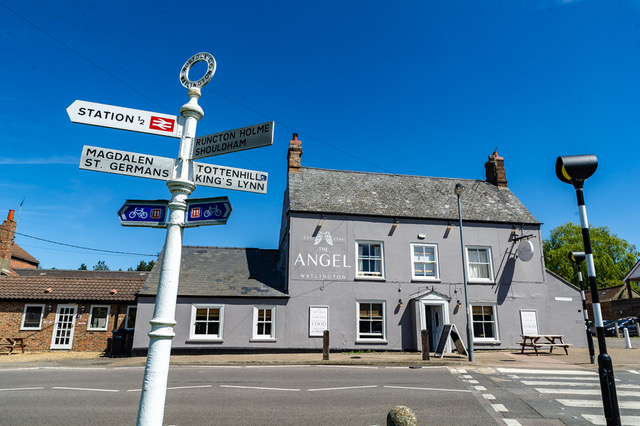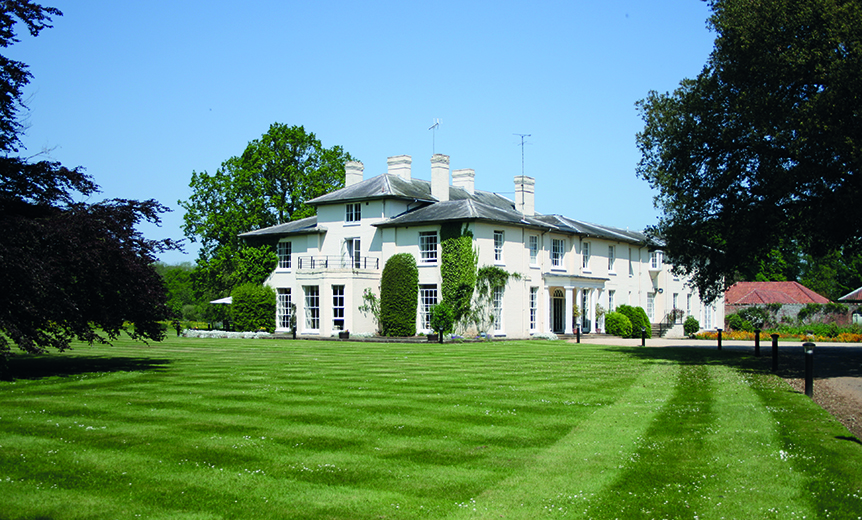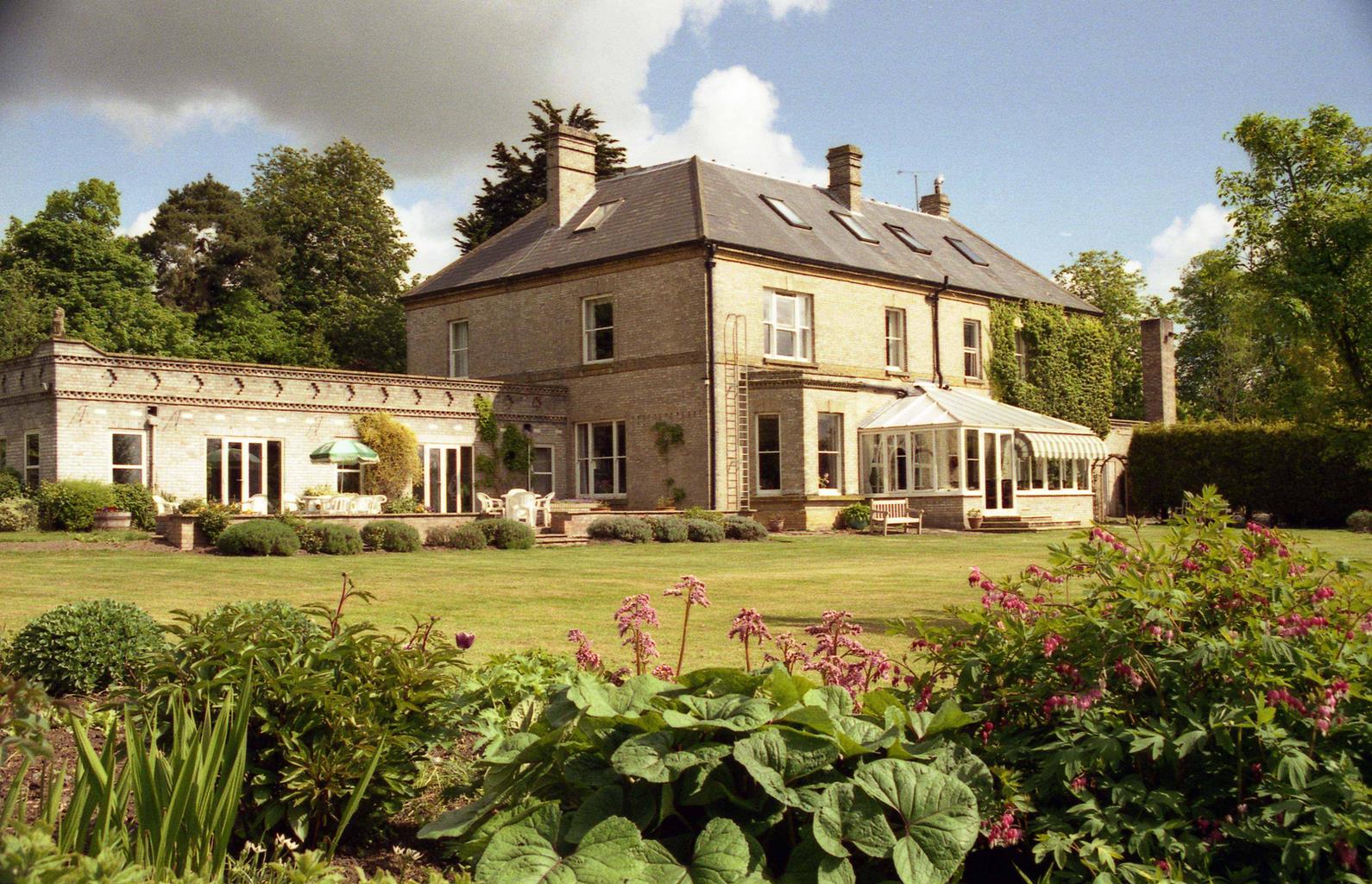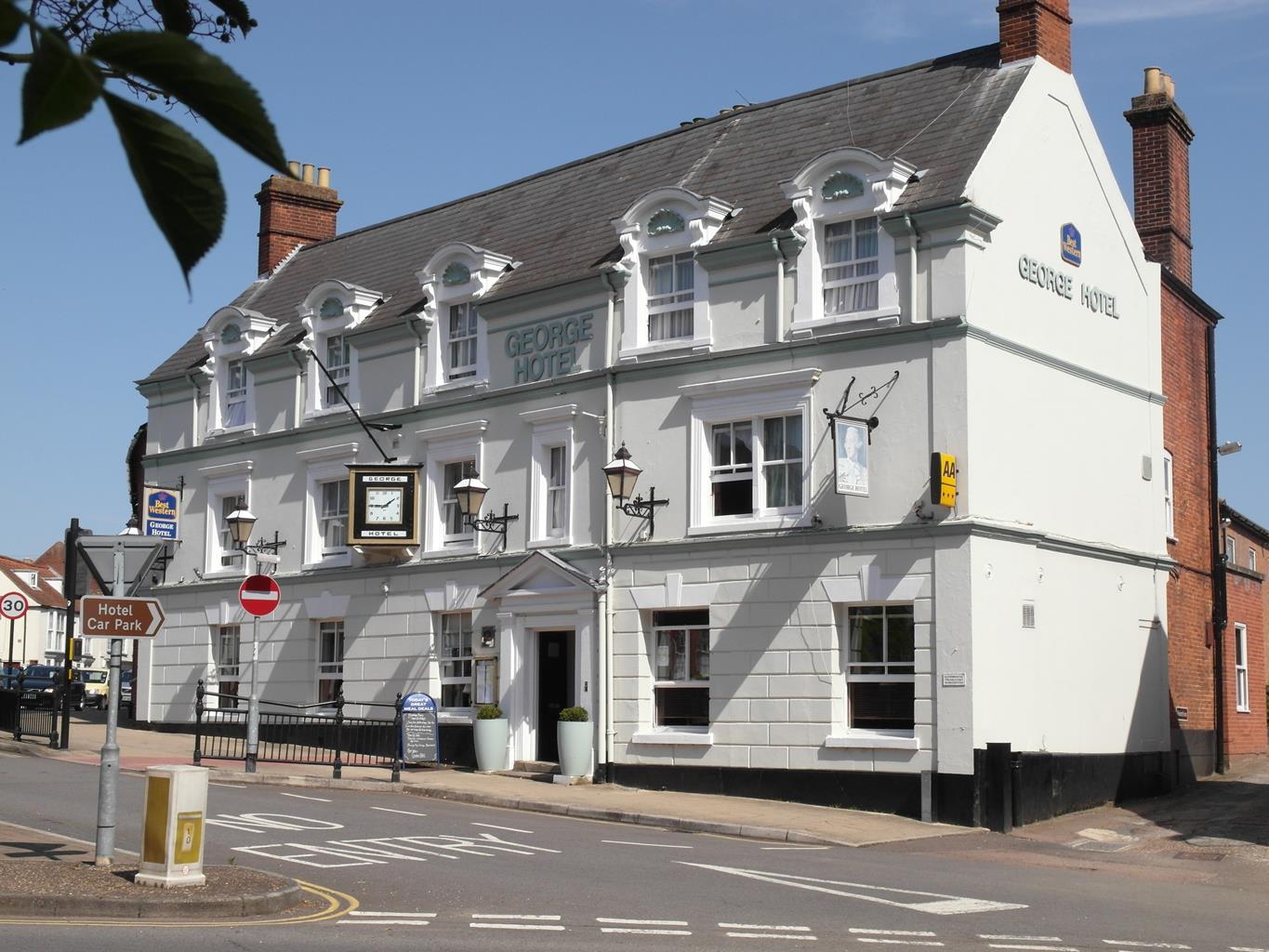A delightful Victorian country house situated down a private drive and set in mature landscaped…
Around Great Cressingham

Stroll in quiet lanes around Pickenham Hall in the valley of the River Wissey.
5.75 miles (9.2kms)
About the walk
Most of us have seen pheasants strutting proudly along the side of the road or standing nobly in recently ploughed fields looking for seeds and grubs. Their metallic coughing calls emanating from woodlands and culverts is also a familiar country sound. You may well encounter them around Cressingham, which is noted for its game shoots. However, pheasants have not always been so numerous, and today's large numbers are influenced by the release of captive birds into the countryside for sport.
Pheasants are handsome birds. The males are chestnut-bronze, gorgeously marked with cream and black and an iridescent green-purple sheen. Their featherless faces are scarlet and they have bottle-green heads. Females are less brilliant, and are quiet and sandy-buff coloured. Pheasants have long been considered a delicacy for the table, and at medieval banquets roasted birds were often presented 'redressed' in their original feathers.
A place on the abbot's table
Pheasants were known in England as early as AD 1050, when they were mentioned in documents relating to royal feasts. The first reference to them in this country as birds for hunting occurred about 1100, when the Abbot of Amesbury applied for permission to hunt them for his own table. However, the pheasants we see today would not be the same as those shot by the abbot, because new species have been brought into the country and have interbred with the original population. These were introduced in the 18th and 19th centuries, and comprised mostly ring-necked species from central Asia, Japan and China. The Mongolian pheasant was introduced into England as recently as 1900, and immediately started to breed with the species already here.
Some are artificially bred for specific colours, which is why when they hang in butchers' shops no two birds seem the same. The word pheasant comes from the Greek phasianos, which means native of Phasis. This has its origins in the story of Jason and the Argonauts. When they went to Colchis on the edge of the Black Sea, they came back with more than a mere Golden Fleece: they were said to have returned with pheasants. There may be some truth to this story. Pheasants may well have originated in this region and then been exported by people who saw their potential as food. They were certainly raised in Greece during the life of Pericles (c.495–429 BC), because he mentioned them in his writing, and they appear in the records of the Romans, who considered them a great delicacy. In the 16th and 17th centuries, pheasant hunting became so popular in Europe that laws were passed to protect them. Many of these birds are shot for sport each year, but when the numbers begin to decline, thousands more are released from the local pheasantries, which breed game birds for just this purpose.
Pheasants take to the wild very readily. The ring-necked species, which are the type you are most likely to encounter in Norfolk, prefer open woodland, meadows and thickets.
Walk directions
Park opposite The Olde Windmill Inn in Great Cressingham. It takes its name from an old corn mill that once operated near by. Turn left along a peaceful country lane. The grassy verges and hawthorn hedges here are a joy in spring, with nesting thrushes, wrens, blackbirds and robins. After about 350yds (320m) you should reach a crossroads.
Turn right along the lane marked to South Pickenham, which runs parallel to the River Wissey. Some of the trees on this lane – oaks, chestnuts and beeches – were planted in the 19th century. After several large open arable fields and then Valley Farm and vineyard to the right, the lane passes through a shady wood of beech and oak where pheasants nest. After the woods look for the meadow with mature trees on your right. Modern agricultural methods mean that trees are seldom tolerated in the middle of fields these days, but this is part of the South Pickenham estate that was carefully landscaped centuries ago with mature trees and grazing meadows.
Turn right when you get to the junction by the white gatehouse, and join the Peddars Way bridle route towards Ashill. This is another wooded lane, with the sturdy walls of the Pickenham Hall estate to the right. Before long, you will see the distinctive round tower of South Pickenham's All Saints' Church. Go straight on at the next junction towards Ashill. Pickenham Hall can be seen off to the right beyond the flint gatehouse. This lane can be plagued by fast-driving cars, so you need to be vigilant and walk with care. Cross the brick bridge over the River Wissey and continue to the next junction.
Turn right along a narrow lane, which is part of the long distance National Trail, the Peddars Way and Norfolk Coast Path, and continue along it for a little less than 2 miles (3.2km), until you reach a crossroads at a main road.
Turn right again and continue until you get to Great Cressingham. St Michael's Church, which you will pass, has flint walls and large Gothic windows. Note the carvings above the tower door – each shield is crowned with the letter 'M', standing for St Michael. If you go inside, look for the 15th-century stained glass and brasses.
Leave the church and follow the main road as it bears left into the village. Turn right at the T-junction back to the car park.
Additional information
Paved country lanes
Gently undulating farmland
Dogs can run free, but watch for traffic
OS Explorer 236 King’s Lynn, Downham Market & Swaffham
Car park opposite The Olde Windmill Inn, Great Cressingham
None on route
WALKING IN SAFETY
Read our tips to look after yourself and the environment when following this walk.
Find out more
Also in the area
About the area
Discover Norfolk
The North Norfolk Coast is designated an Area of Outstanding Natural Beauty and probably the finest of its kind in Europe. Here you’ll find a string of quaint villages and small towns – Holkham, Wells-next-the-Sea and Cley next the Sea are 21st-century favourites, while Sheringham and Cromer are classic examples of a good old-fashioned seaside resort where grand Victorian hotels look out to sea. Further round the coast you'll find Great Yarmouth, one of the most popular resorts in the UK and packed full of amusements, shops and seashore entertainment. And let's not forget Norwich, the region's only city.
Norfolk prides itself on its wealth of historic houses, the most famous being Sandringham, where Her Majesty the Queen and her family spend Christmas. Many of Norfolk’s towns have a particular charm and a strong sense of community. The quiet market towns of Fakenham and Swaffham are prime examples, as well as Thetford, with its popular museum focusing on the TV comedy series Dad’s Army which was filmed in the area.
Nearby stays
Restaurants and Pubs
Nearby experiences
Recommended things to do
Why choose Rated Trips?
Your trusted guide to rated places across the UK
The best coverage
Discover more than 15,000 professionally rated places to stay, eat and visit from across the UK and Ireland.
Quality assured
Choose a place to stay safe in the knowledge that it has been expertly assessed by trained assessors.
Plan your next trip
Search by location or the type of place you're visiting to find your next ideal holiday experience.
Travel inspiration
Read our articles, city guides and recommended things to do for inspiration. We're here to help you explore the UK.













